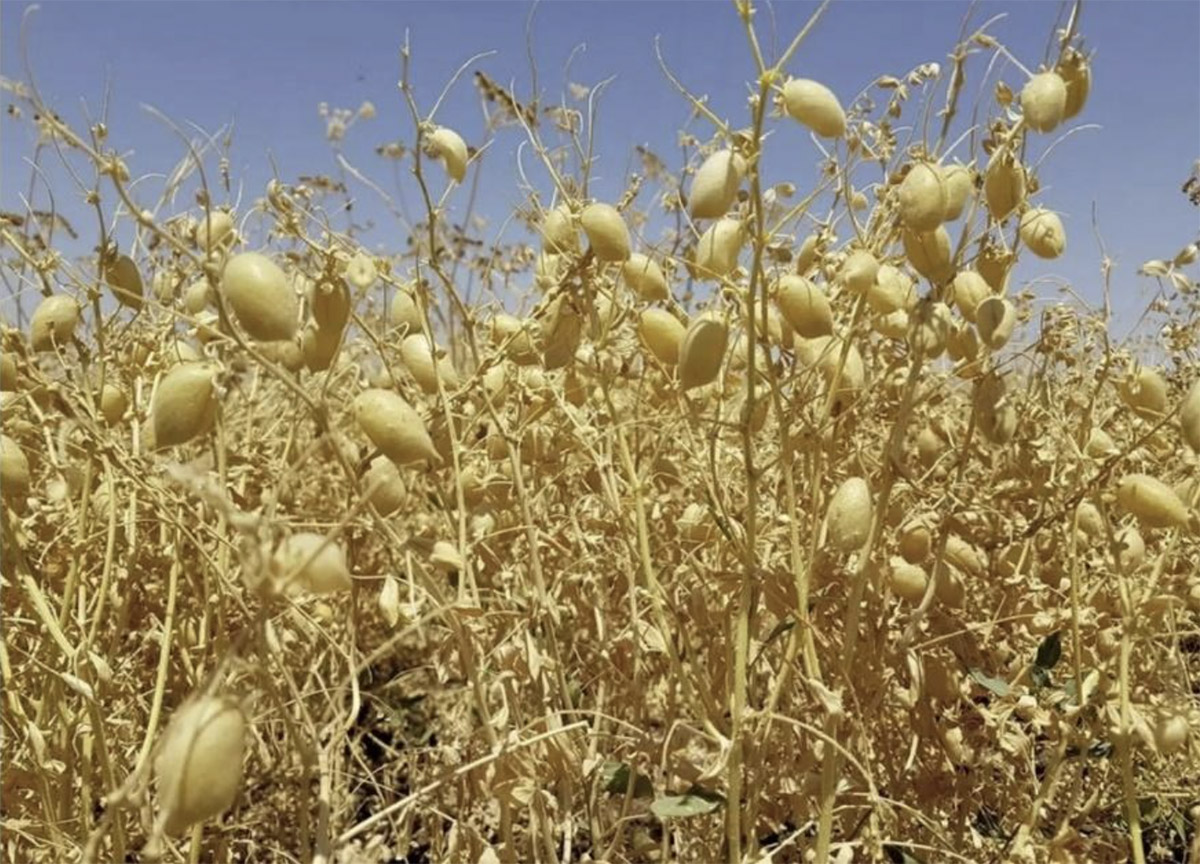September 23, 2022
With Russia’s chickpea harvest in full swing, the GPC’s Dario Bard, together with Navneet Chhabra of Global Garbanzo, checked in with Tareq Awad of Fruitimpex to see how the crop is coming along.



Photo courtesy of Fruitimpex.
Thanks to generous yields, the government is estimating a bumper crop this year, and, despite the fallout from the war in Ukraine, Awad anticipates that Russia’s exporters will be able to capitalize on the global kabuli chickpea shortage.
“The major issue in Russia has been logistics and the situation is improving day by day,” he says.
When Western sanctions were imposed on Russia following its invasion of Ukraine, all major shipping lines except MSC withdrew from the Russian market. But Awad reports the shipping line Arkas from Turkey is now providing access to its home country as well as Egypt, and Qatar-based shipping and logistics company Milaha is also operating out of Russian ports.
Historically, Russia’s chickpeas have been the lowest priced on the international market. At the moment, both Awad and Chhabra believe Russian prices have bottomed out. As an indicator, Chhabra notes that Russian growers are getting less money for their chickpeas this year than they did last year.
“They are selling their chickpeas for 35-36 rubles per kg, compared to 37-38 rubles at the same time last year. And this despite the ruble being 20% stronger than it was then,” he says.
It is difficult to know how prices might evolve, cautions Awad, but his expectation is that prices may start trending upward as early as October.
“We will have to wait and see,” he says.
Snapshot: Russia’s 2022 Kabuli Chickpea Crop
|
Production |
335,000 MT |
|
Carry-in |
14,000 MT |
|
Domestic Consumption |
10-15% of production |
|
Major Markets |
Pakistan, Turkey, Saudi Arabia, Jordan, Egypt, UAE |
Tareq Award: It is my pleasure. Thank you for inviting me.
TA: Russia’s chickpeas are harvested in September. As of right now, about 80% of the crop has been harvested in the major growing areas of Saratov and Samara. In other areas, like Orenburg, harvest progress is at about 50%. Overall, I’d say we still have about 20% of the crop in the fields. If the weather remains dry, the harvest should wrap up by early October. This is the normal harvest window here in Russia.
TA: For the most part, the crop received good rains and the climate wasn’t cold. As a result, we are seeing very good yields and larger than normal caliber sizes.
At the start of harvest, though, we did have some delays due to extended cold temperatures and rains. These conditions also resulted in a higher than usual percentage of broken chickpeas. Normally, we get 5-6% of broken chickpeas. This year, it will be slightly higher than that, but the overall quality of the crop is good.
TA: This year, yields are averaging between 1.1 – 1.6 MT/ha., with some areas seeing yields as high as 2 MT/ha. These are record yields.
Farmers seeded 287,000 ha. to chickpeas this season, including 105,000 ha. in Saratov, 72,000 ha. in Samara, 56,000 ha. in Orenburg and 41,000 ha. in Volgograd.
The government estimate for the 2022 chickpea crop is 373,000 MT, of which 90% is of the kabuli type and the rest is desi chickpeas. That means this year’s kabuli chickpea crop is about 335,000 MT. That is above the historic average of 300,000 MT and more than last year’s production of 315,000 MT.
I’d also like to mention that the government’s chickpea crop estimates are becoming more and more accurate every year. They are much more accurate now than they were four years ago.
TA: Thanks to the favorable weather conditions, this year’s crop is of above average quality in terms of cleanliness, color and size. About 93% of the crop is 6-7 mm and about 7% is 8 mm. What is most notable about his year’s crop is the widespread presence of 7 mm chickpeas and the near total absence of 5 mm chickpeas.
TA: Yes, we checked around and 14,000 MT of carry-in is what the trade is reporting.
TA: Most of Russia’s production volume is destined for export. Local consumption has been typically around 10%, although it is increasing. Traditionally, the domestic consumers have been Muslim minority populations, who eat cooked chickpeas. But now it appears Russians have acquired a taste for hummus. A year ago, there were only one or two brands of hummus on Russian supermarket shelves. Now there are as many as 10. This year, therefore, we expect the domestic market to take 15% of production. The rest will be exported to a number of destinations. Our major markets are Pakistan, Saudi Arabia, Jordon, Egypt and the UAE.
TA: From our point of view, Europe’s demand is still there. The challenge is getting over the logistical and payment hurdles. The Russian exporter has ways to overcome these problems and I think that in October, clarity will come on the logistics and payment issues.
TA: Operations in Ukraine began in February, and the biggest impact was the withdrawal of major logistics companies from the market. But since then, other means of transportation have been developed and things have improved. Now small and medium vessels can easily move across the Black Sea to ports in Turkey and Egypt, and we expect we will be able to ship to other regions in the very near future as well.
TA: Let’s talk about Russia first. Everyone knows that the ruble experienced a sharp devaluation when operations began in Ukraine. For the past two months, the exchange rate with the U.S. dollar has stabilized.
If we look at other regions, and I am paying close attention to Egypt, there are efforts to stabilize the exchange rate as well. The challenge is for the importer to find the way to manage the exchange rate and currency situation.
Russian chickpeas are shipped to a wide variety of destinations. Some might be affected by currency devaluations, but others are not. We can always do business somewhere.
TA: We have not noticed any weakening in demand. The only thing is that we might have to adjust our prices. Take Pakistan, for example. If there is strong demand but at a low price, Russian exporters are willing to work with importers to match the market price. Often, we manage. A few months ago, we weren’t exporting to Karachi, and now we are. You have to find the conditions for a win-win, so that the exporter in Russia and the importer in Pakistan can both make their margin.
TA: I believe there is a shortage, and the Russian exporter has the opportunity to fill the gap. As I mentioned earlier, the main issue for us has been logistics, and this is improving day by day.
TA: It is very difficult to look ahead. Nobody knows what will happen in three months. But for the time being, FOB prices for 6-7 mm kabuli chickpeas are around $700 per MT. For 8 mm, prices are around $850. I think these prices will hold through the end of September. In October, if logistics improve, we could see prices increase.
TA: I do. Russian farmers are not interested in selling at lower prices. Consider that from February, when operations in Ukraine began, through April, farmer dressed 6-7 mm chickpeas were going for $850-900 per MT. Now prices have been marked down by $150 more or less. That’s why we feel the market has hit bottom.

Russian exporters / chickpea shortage / Tareq Awad / chickpea harvest / Navneet Chhabra / Global Garbanzo / Fruitimpex
Disclaimer: The opinions or views expressed in this publication are those of the authors or quoted persons. They do not purport to reflect the opinions or views of the Global Pulse Confederation or its members.